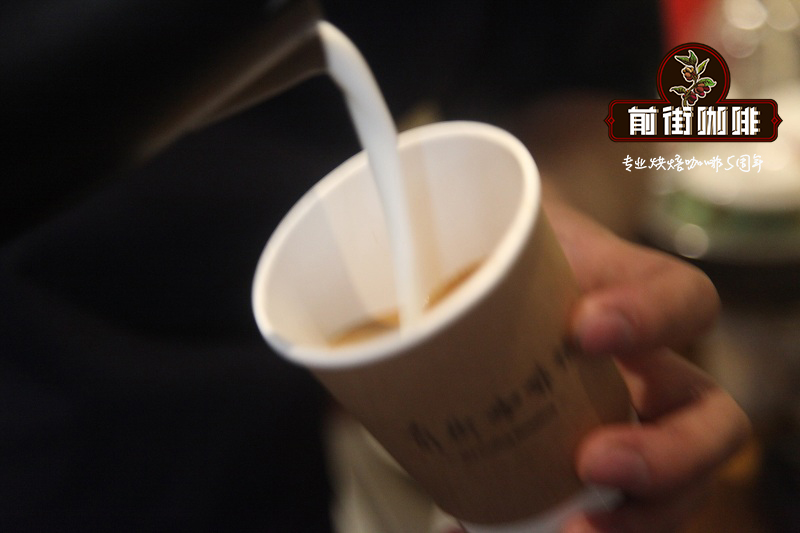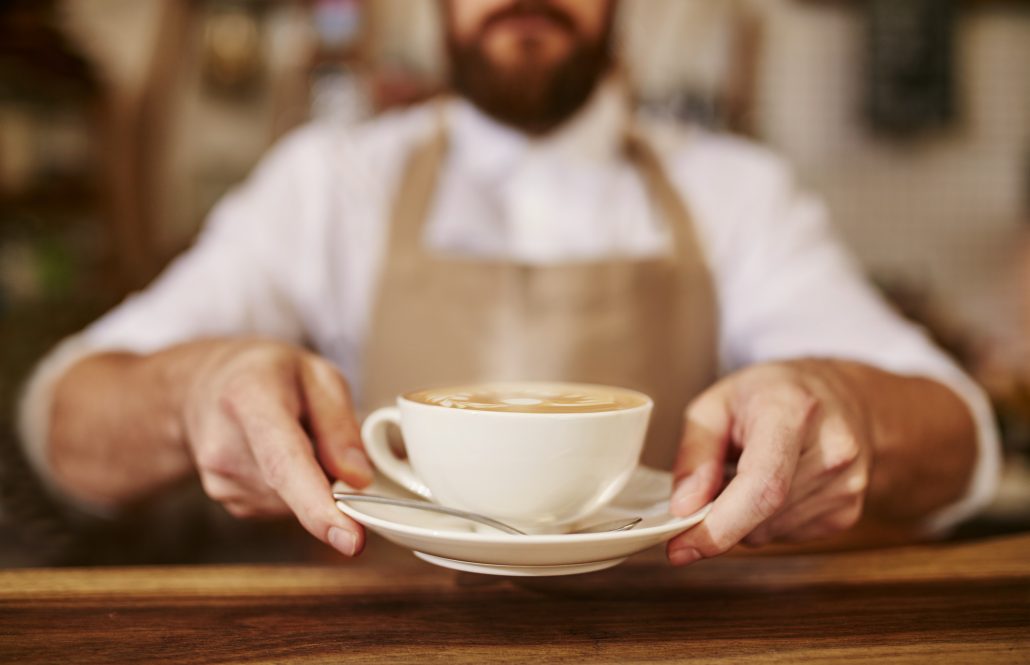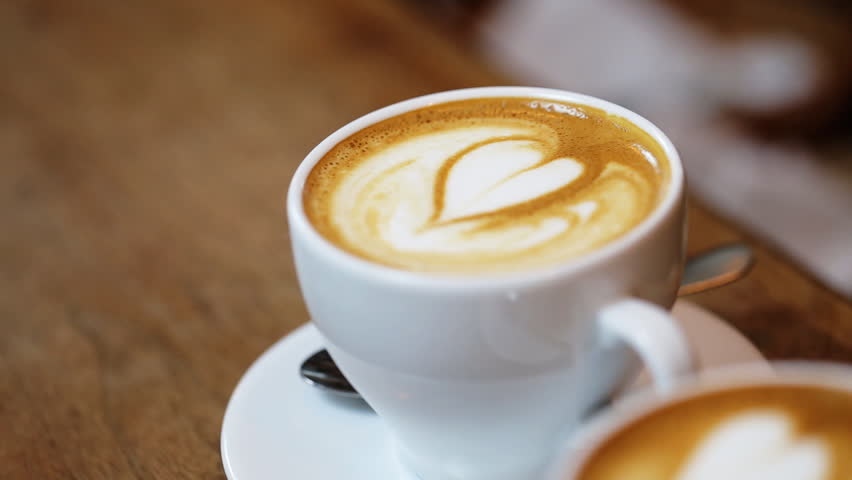The refinement and redefinition of French coffee. Is there a boutique coffee shop in Paris, France?

Professional coffee knowledge exchange more coffee bean information please follow the coffee workshop (Wechat official account cafe_style)
The refinement and redefinition of French coffee. Is there a boutique coffee shop in Paris, France?
Until recently, Paris was known for its cafes rather than the quality of its coffee, but over the past decade the city has seen a wave of boutique coffee shop openings.
NOA BERGER traces how French cafes and roasters harness the "global localization" of boutique coffee. All the photos were taken by Albin Durand for La Fontaine de Belleville.
Although the development is relatively slow, the movement has attracted the attention of the culinary world, as evidenced by the recent foray into the boutique coffee market by French chef Alain Ducasse.
Le Caf é-at the time of writing, Alain Ducasse opened two stores in Paris, both designed to suit its surroundings: one full of bright colors and simple lines to reflect the nearby luxury department store, and the other, referring to the industrial and handicraft history of the region, designed a steel "zinc style" bar, located in the center of a large space decorated with antique coffee equipment. Both stores visually express a sense of luxury and attention to detail, with a menu of single-origin coffee presented in custom-made coffee cups and homemade Madeleine cakes, both made by baristas in leather gloves (here known as cafeliers).
Although this is partly because of his reputation, it is also because they combine visual clues from high-end cafes and workers' cafes, which link boutique coffee with French cuisine culture and local handicraft traditions. But how did boutique coffee, which initially had a strong connection with Anglo-Saxon culture in appearance and taste, change and adapt to the culture of the country it was introduced into? Coffee as a global commodity, what does "localization" mean?
Nationalization of taste: realization of localization
In its long history, coffee has played a very different role: exotic drinks, colonial goods, global goods-but it is also a staple of local cuisine in coffee-producing countries. Coffee passed through the Ottoman Empire ("wine of Islam") from its native Ethiopia in the 15th century, and then entered the Tropic of Cancer as an European colonial good, coffee was originally regarded as a symbol of exotic cuisine and a threat to Christian Europe. To solve this problem, coffee has been reshaped as an integral part of European culinary culture, reshaping its roots in Europe-specifically, as historian Jonathan Morris tells us, in Greece and Vienna (the addition of milk to coffee created kapuziner) and the cafe é au lait in Paris, transforming coffee from "black beer" to "white dessert".
In France, for example, coffee first became popular in 1670, when the diplomatic envoy of Sultan Mehmed IV visited the court of Louis XIV and the Palace of Versailles set off a "Turkic frenzy". Coffee became part of it. The trend then spread to Paris and led to the opening of dozens of cafes. One of them, Procope, is a luxuriously decorated cafe designed for the elite. It has been a great success and has been imitated across the continent. After the French Revolution of 1789, "worker" cafes for the urban masses appeared together with elite cafes, and finally during the Industrial Revolution, the two models merged to form the Paris Cafe as we know it today.
At the same time, under the influence of historical events and political agenda, France has also formed a national drinking fashion. Its association with locally produced milk makes coffee more French and helps it replace hot chocolate as the breakfast staple and drink of middle-class women. Coffee became a symbol of the "democratic" drink, representing all strata of French society, from the court to the revolutionary proletariat. However, from the Napoleon era to World War II, a series of wars affected the quality of coffee production and consumption in France. This, coupled with Italy's strong influence, has pushed France closer to affordable robusta coffee, which uses dark-roasted espresso to cover up its shortcomings. These events not only shaped the local coffee pattern, but also nationalized it, creating the traditional "French coffee" as we know it today. Coffee is not only shaped as a symbol of French culture, but also masked the colonial origin of coffee and the high labor cost in the production process.
In the 1990s, coffee was "reintroduced" to France, this time in a different way. The "second wave", led by Starbucks, brought American understanding of Italian coffee to France, promoting cappuccino and latte as well as Anglo-Saxon coffee shop models. About ten years later, the third wave arrived in Paris. Many of these avant-garde cafes reflect the strong influence of Anglo-Saxons on menus and design, which tend to evoke feelings for Brooklyn, Melbourne and even Stockholm cafes more than classic Paris cafes. This type of design not only reflects external influence, but also plays an important role: sending a signal to potential customers that these stores are not classic Parisian cafes that offer traditional small cups of bitter black coffee. Instead, they can find something different and innovative. Revolutionary tastes may have appeared elsewhere, but they are now changing the face of the place. In a consumer environment with almost unlimited choices, design and aesthetics are an important way to signal to consumers that specific products are most in line with the specific tastes, lifestyles and values they pursue.
However, as boutique coffee has gained a foothold in Paris, roasters and coffee shops are looking for ways to learn from and talk to local traditions. La cafe é oth è que offers sommelier en cafe training, inspired by the country's booming wine industry. L'Arbre à Caf é specializes in the catering field and aims to associate coffee with the rich culinary traditions of France. Coutume Caf é combines the elements of the Paris Fashion Cafe with the appearance of the botanical laboratory. Belleville Br coffee lerie invites its clients to rediscover hand-made coffee that used to be considered undrinkable "sock juice" and to use high-quality blended coffee and "French barbecue" as a way to communicate with local preferences. Belleville also borrows from post-revolutionary workers' cafes in the design of coffee shops, retail areas, packaging and even overalls, creating an approachable French style while conveying a sense of revolution and novelty. Le Caf é Alain Ducasse makes French coffee French through design, semantics and menu selection, such as serving coffee with locally grown and roasted almonds, or highlighting its French coffee grown on Reunion Island by making it the most expensive item on the menu.
The bakers of Caf é s Belleville wear their iconic blue worker's jacket.
La Fontaine de Belleville's coffee shop space draws lessons from the aesthetics of post-revolutionary workers' cafes, making its space full of unique Parisian characteristics.
Connecting with local traditions and history is one way that boutique coffee can reach a wider audience. This represents a larger trend in the consumer culture recently described by sociologists Luc Boltanski and Arnaud Esquerre. As profits from large-scale production in the global south decline, new ways of generating value and revenues continue to grow. An important way to create value in our economy is to distinguish between "standard" and "special" objects through narrative, especially through the mobilization of past, traditional and nostalgic feelings (for example, distinguish between "old" cars and vintage cars).
In this case, the transfer of the past and local traditions in the boutique coffee market is not only to attract more audiences, but also to extract and create value, in line with the contemporary trend of global capitalism.
Conciliation and concession: realizing "Global Localization"
While the boutique coffee movement may mobilize local traditions and history to win more followers, it also represents novelty and innovation, seeking new ways to improve quality and make it more sustainable, ethical and transparent. It might be interesting to consider ways to convey innovation through space and packaging design, brands and social media. Is this achieved by using science and technology as inspiration? If so, how can we coordinate this by making our space comfortable, accessible and attractive to everyone? Should we clarify the idea of change by relying on the past to evoke memories of revolutionary historical periods? Is it possible that the idea of innovation, or more broadly, the idea of the future, may have been represented by Anglo-Saxon aesthetics?
As the boutique coffee market has become an integral part of local culture, it has also reconciled with "local" and "global" in new ways. When coffee first entered France, its geographical and cultural origins were concealed because it was facing nationalization: in order for coffee to be "French", it must first be no longer associated with Ethiopia, the Ottoman Empire or the Caribbean. When coffee arrived in France through the new route, it began its journey to integrate into the local culture. However, a significant difference makes boutique coffee unlikely to be completely "French". The boutique coffee movement puts the concept of "origin" at the core as the core way to establish the quality, morality and authenticity of boutique coffee. Although roasters such as Verlet introduced single-origin coffee to the market as early as 1880, it was labeled exotic and roasted dark to cater to local consumers. In contrast, many roasters today are looking for materials that reflect and highlight the origin of coffee, constantly finding a delicate balance between achieving this goal and adapting to local tastes. On the contrary, the emphasis on origin also makes coffee semantically and symbolically similar to French staple wines, especially through the use of the term terroir. This creates a feeling that boutique coffee somehow "belongs to multiple places, traditions and history". In this sense, boutique coffee is not entirely a global drink, nor a local drink, but a "global localization" drink.
Therefore, coffee is not only global, but also local, or "global and local", which is reflected not only through the choice of baking, but also through semantics and aesthetics. If boutique coffee companies want to map the future for the industry, it may be interesting to think about what the future will look like and how to communicate it through words and vision. This is all the more important given the role of coffee shops in the middle class process. So, how can boutique coffee create physical space, virtual space and symbolic space associated with local culture, while representing the global origin of coffee and reflecting tradition and future?
NOA BERGER is a doctoral student at É cole des Hautes É tudes in Sciences Sociales in Paris, focusing on the sociology of consumption and culture.
END
Important Notice :
前街咖啡 FrontStreet Coffee has moved to new addredd:
FrontStreet Coffee Address: 315,Donghua East Road,GuangZhou
Tel:020 38364473
- Prev

Serve with dignity! How should coffee shops deal with difficult customers?
Professional coffee knowledge exchange more coffee bean information Please pay attention to the coffee workshop (Wechat official account cafe_style) over the past few decades, the domestic catering service industry has developed rapidly, front-line staff often talk about embarrassment, customers are always right has become the basic rule of the store. The service attitude of the shopkeeper is often regarded as the criterion of a good store. Okay, coffee shop. No.
- Next

[topic] what kind of coffee should I order when I go to a coffee shop / visit / exchange / observe / discuss?
Professional coffee knowledge exchange more coffee bean information Please follow the coffee workshop (Wechat official account cafe_style) the editor also likes to visit shops, but often fall into an embarrassing situation of not knowing what to order. Instead of being poor or pretending to be a rookie, I was really curious about all kinds of coffee. I wanted to taste all of them, but I couldn't drink them all, so I was suffering from difficulty in choosing. Until one day
Related
- What documents do you need to go through to open a coffee shop? coffee shop coffee shop certificate processing process
- How to purchase Coffee beans in small Cafe how to choose a suitable supplier for domestic Coffee supply Company
- How to drink Starbucks Fragrance White Coffee? how to make Australian White Coffee? what Italian coffee beans are recommended?
- The Story of Flora Coffee: the name of Flora Coffee Bean and the implication of the Flowers on Florna Coffee
- How much does a cup of coffee cost? How much is the profit of a cup of coffee? What is the profit of the coffee shop in a year?
- Yunnan small Coffee, known as "fragrant Coffee", introduces the characteristics of Alpine Arabica Coffee producing areas in Yunnan, China
- 2023 latest Starbucks full menu price list how much is a cup of Starbucks coffee what is better to drink the most popular hot and cold drinks recommended
- Starbucks different kinds of Coffee Price list Starbucks menu 2023 Top Ten Best drinks in Starbucks
- Starbucks Spring praise Comprehensive matching Coffee Bean theme Story Packaging implication and taste description
- The cost of a cup of coffee latte American coffee cost price and selling price

